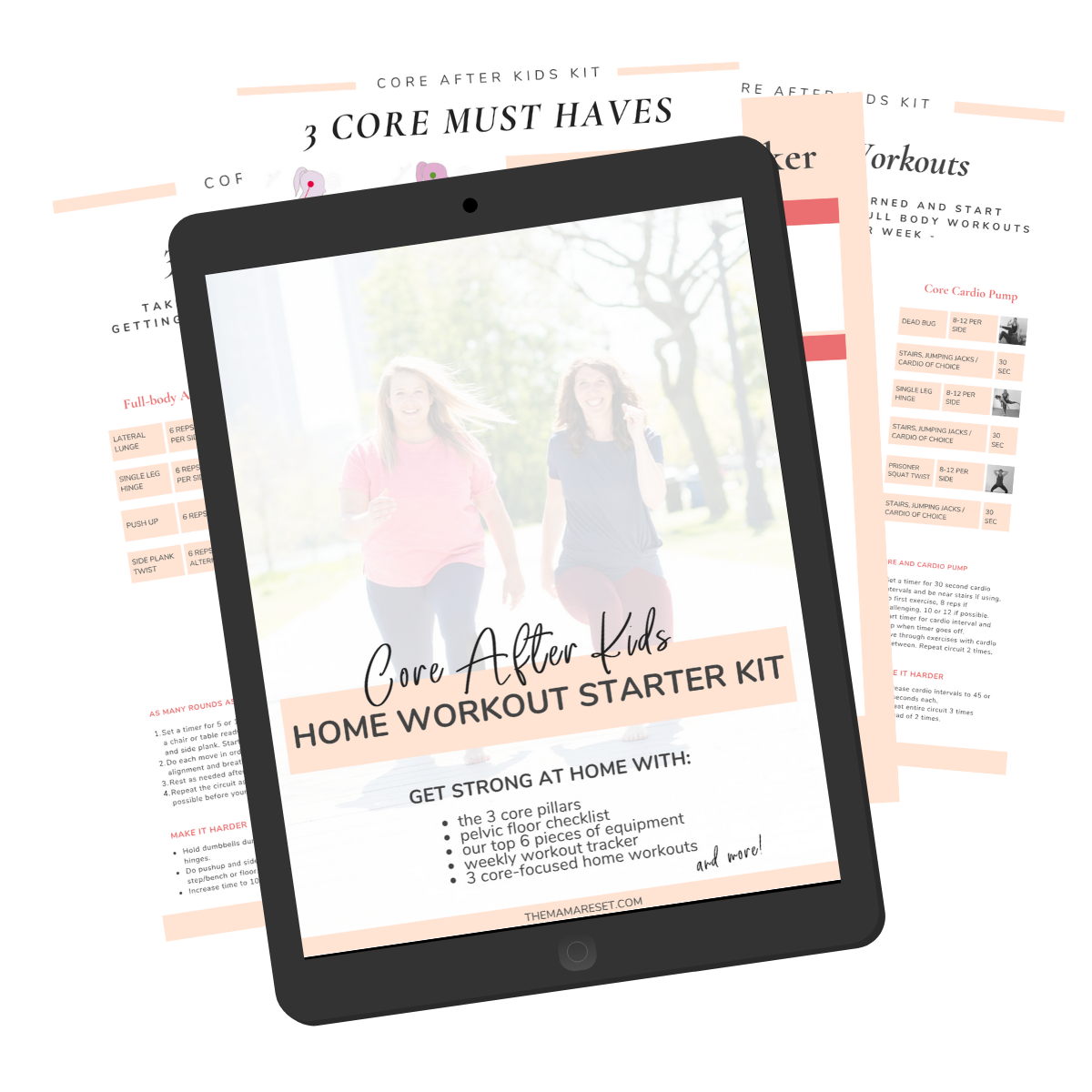4 Visual Cues to Release Pelvic Floor Tension
Momlife, pregnancy, childbirth and desk work can create tension in all tissues, including the lady parts. We’ve got 4 cues to help your pelvic floor R-E-L-A-X.
As modern mamas, we’re familiar with tight, stiff muscles in our body.
An achy neck. Sore, tense shoulders. Tired, stiff low back.
Well, your pelvic floor muscles are no different. They can hold onto tension and stress in the same way our neck and shoulders do.
We’re just not as intimately aware of these muscles.
You might be surprised to hear that hypertonic pelvic floor muscles — in other words, pelvic floor muscles that have TOO much tension — are quite common for mamas.
Posture. A sedentary lifestyle. Stress. Mismanaged pressure/breathing mechanics. Trauma to the tissues due to tearing or an episiotomy during childbirth. These are all contributing factors to tight, stiff pelvic floor muscles.
And to be honest, it’s not just mamas that are experiencing hyperactive pelvic floor muscles! Modern life with tons of sitting, tight schedules and stress can cause anybody – vagina or no – to get stiff and tight in the core muscles.

However, the symptoms that can come along with hypertonic pelvic floor muscles are very common in the postpartum period (meaning anytime after you’ve had kids!) and so a lot of the time we chock it up to the new reality as a mother.
But even though A LOT of mamas experience these kinds of symptoms, that doesn’t mean it’s ideal and there are many ways we can affect change in our body.
So just how do you know what’s going on down there? Well, let’s chat about some symptoms you might experience if your pelvic floor muscles are working over time.
- pain or discomfort during insertion of tampon, menstural cup or intercourse
- low back, hip or pelvic pain
- urine leakage with cough, sneeze, or jumping
- urine leakage when close to the toilet
- feeling like you can’t fully empty your bladder
Before we go any further, as always, we highly suggest seeing a Pelvic Health Physiotherapist to assess what’s going on in your body.
Whether you know you’re dealing with over active pelvic floor muscles or you’re not sure, deepening your awareness and control over your pelvic floor muscles is a great place to start.
Check out this short video for visual cues we use with our clients to help release your pelvic floor muscles.
Which one works the best for you?
Check out our guided breathing tutorial to help deepen your awareness and start letting go of tension in your pelvic floor. Get access now!
Keep Exploring
Start Getting Strong













0 Comments